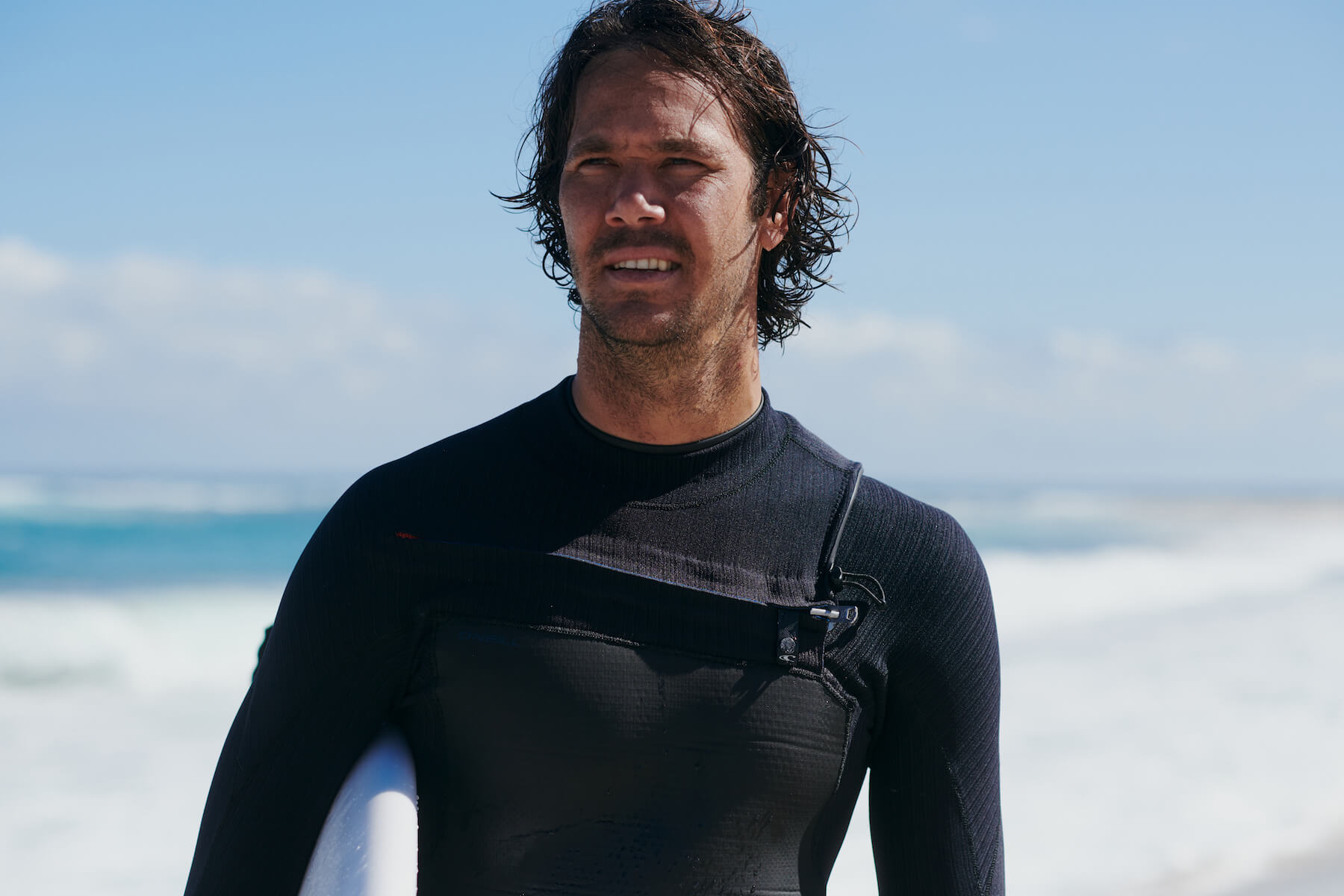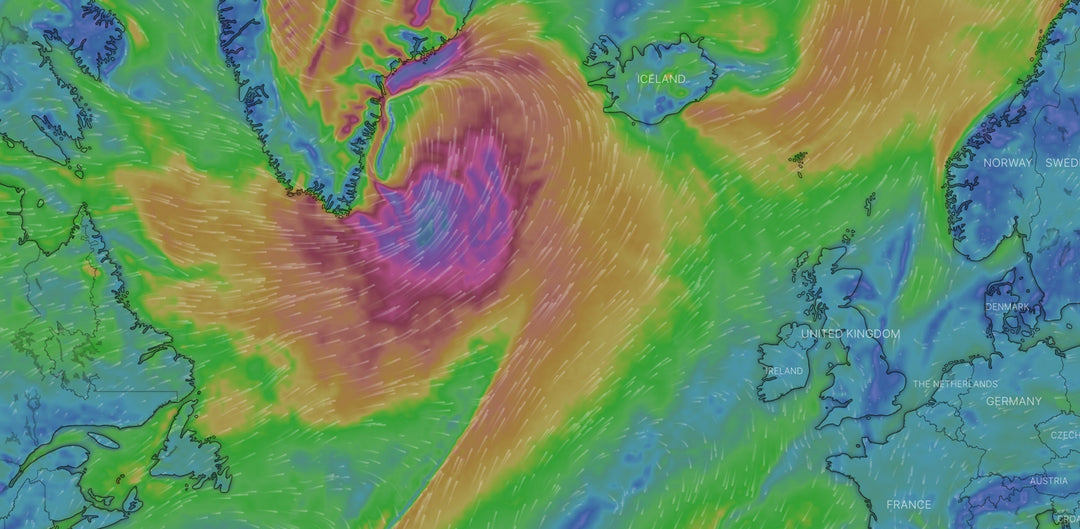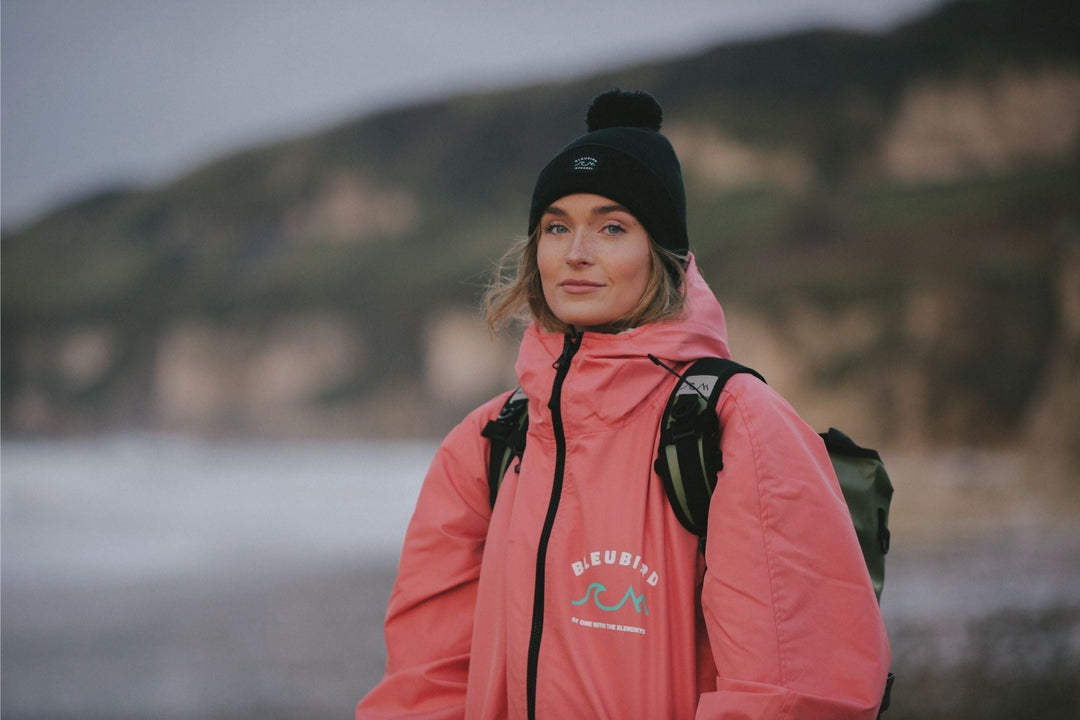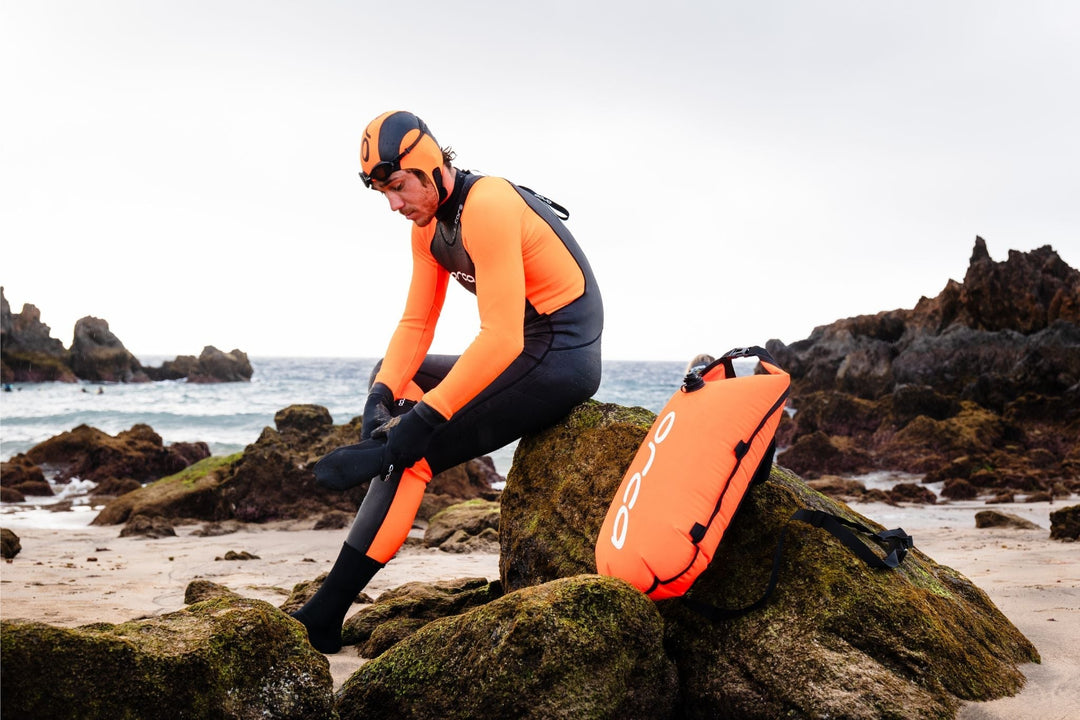Which is your main sport?
The first question to answer when you are buying a wetsuit is what you are getting it for. Whether you need it for swimming or surfing, windsurfing or kayaking, kitesurfing, paddle boarding or a combination of these will determine what type of wetsuit to go for. In general you would look for a lighter wetsuit for swimming than for the other sports to get the best flexibility, although you can also get thermal openwater swim wetsuits that would keep you warmer in winter.
Are you looking for a summer or winter wetsuit?
This is going to determine the thickness of your wetsuit. As a rule of thumb in Ireland you will need a 5/3 or 5/4 wetsuit if you want to be able to use it all year round for sports like surfing, windsurfing and kitesurfing, but also for paddleboarding if there's a reasonable chance you will fall into the water.
In the summer time you might go for a 3/2 or a 4/3 wetsuit that will not be as warm, but would cover you for the core summer months or longer if your activities are mostly out of the water (paddleboarding, windsurfing, kitesurfing, kayaking) where you don’t get as cold.
If you are looking for a wetsuit for swimming and would like to get a full-length wetsuit, most options will have a mix of 2 to 4mm panels, some may even have 5mm thick panels, but in general you would be looking at a 3/2mm thickness even in the colder months. Of course, you can use a shorty wetsuit too for swimming, for example if you enjoy cold water immersion in the winter months and would prefer not to use a full-length wetsuit. We explain the options for swimmers in more detail further on.
What do different types of neoprene, seams and linings say about the quality of the wetsuit?
The lighter, warmer and stretchier your suit, the better. Therefore higher grade neoprene that is lighter and stretchier will be more expensive than basic neoprene. Wetsuits with flat lock stitched seams are usually cheaper than those that have glued and blindstitched or welded seams/glued seams. That is because welded and/or glued seams let less water through. A lot of the brands now offer wetsuits with lining on the inside that will be quick dry and offers another layer of warmth.
We sell wetsuits from the major surf- and water- sports brands, all of which specialise in this area. That means that seams are strategically placed so that you get seam-free paddle zones for maximum comfort and flexibility. Only one of the many things that set them apart from beach suits that are available from supermarkets or other non-watersports retailers.
All recommendations are for Ireland and meant as a guideline only. You can see our range of wetsuits here:
Surfing / Windsurfing / Kitesurfing / Wakeboarding / Wingfoiling
Summer:
A 3/2 or 4/3 full suit are perfect for summer in Ireland. If you are only getting one wetsuit for all year round, get a 5/3 or 5/4 though. There are very few days that you would be too warm surfing in a winter wetsuit. If you’re feeling warm you might choose a wetsuit with short legs, if you are kitesurfing or wakeboarding or a wetsuit with short sleeves if you are windsurfing.
Winter:
For winter in Ireland, you need a 5/3 or 5/4 wetsuit to keep you warm and you will need to accessorise this with boots, gloves and a hood during the very cold months. Alternatively, if it’s within your budget to get a second wetsuit you might look towards a 6mm hooded wetsuit for the deep winter for surfing. O'Neill also have a great option of a 5/4 wetsuit with a detachable hood, which would be a very versatile wetsuit for all year round.
Pick the perfect pair of neoprene boots to go with your wetsuit, depending on your sport and how much time you want to spend in the water. We've looked at the O'Neill range of boots in detail to show what differentiates the high end boots from the entry level ones.
For windsports:
If you are doing a windsport, get a wetsuit that has a rubberised chest pad to offer more wind protection for your core. Another nice feature for kite- and windsurfing are velcro straps at the bottom of the leg to strap the wetsuit tightly close and stop water from gushing up your leg.
Paddleboarding / Kayaking
Summer:
As you might stay dry for a lot of the time, a lighter wetsuit or one without sleeves will be great for summer. When paddleboarding or kayaking without being in the water much, you have to be careful not to overheat or dehydrate especially if you’re going long distance or on a warm day. A shorty, 3/2 or 4/3 are all fine depending on what exactly you do and how much you feel the cold (and how much of a workout you are going for!)
Winter:
In winter in Ireland you will need a 5/3 or 5/4, much the same as for the other sports mentioned above.
Swimming

If you are seriously into swimming or compete in races (triathlons), you should consider buying a triathlon wetsuit. These will enhance your swimming and are great all year round. If you have taken up openwater swimming and would like to swim longer distances and work on your technique, an openwater swimming wetsuit would be the best choice.
If you swim just for fun, for example go in for quick dips and swim shorter distances, a 3/2 surf wetsuit will do the trick and will most likely only cost a fraction of a good triathlon or openwater wetsuit. Surf suits are also more durable and will be suitable for a greater range of activities.
Summer:
Shorty or 3/2 or no wetsuit if you are used to the relatively cold Irish water
Winter:
Anything between a 3/2 to a wetsuit with 4 or 5mm panels if it is a wetsuit specifically for swimming. If you are dipping or are used to swimming in cold water you might prefer a long-sleeved shorty wetsuit or a shorty where you can still feel the cold water on the legs but protect your core. If you feel the cold a lot and are not swimming long distances, you might choose a thicker surf wetsuit but should pick one with very stretchy neoprene to get as much flexibility in the shoulders as you can. The benefit of openwater and triathlon wetsuits is that they have buoyancy panels in places that will help your swimming technique. A surf wetsuit won’t do that.
How long can I expect my wetsuit to last?
This depends on the quality of the suit, but mostly on how often you use it and what you do with it. If you use your wetsuit every day, you should expect it to last you around two seasons. After that the material will have stretched and the suit will have lost some of its warmth. That doesn’t mean you can’t use it anymore, it just won’t keep you as warm.
If you use your wetsuit once a week or even less it should last you a few years. We often have customers coming into the shop looking to replace a suit they have had for the last 4/5/6 years – it is absolutely possible to keep a wetsuit that long if you take good care of it.
Most wetsuits will come with a 12 or even 24 month warranty, so if anything goes wrong with the seams or the neoprene, go back to the shop where you bought it and send it in for warranty. This obviously does not cover damage on the suit that is from use for example when you get caught on rocks - there is no warranty for that.
Openwater and triathlon wetsuits feature a smoothskin outside that makes them glide really well in water but that is also quite delicate. They often get delivered with a pair of gloves you can wear when putting them on. These wetsuits need a little more care to keep them in good nick, mind your fingernails!
One way to extend the lifetime of your wetsuit is to use a wetsuit hanger to dry and store it. We love the C-Monsta wetsuit hanger that is made from recycled materials in Scotland.
Chest Zip versus Back Zip
Wetsuits with chest zip (or zipless suits but with the same closure system) are very popular. Some say that they are warmer than backzip suits, but is that really the case?

If done well a chest zip suit can definitely have some advantages over a backzip, for example that there is nothing limiting the stretchiness of your suit on the back. You need to look out for drain holes, a zip you can easily close yourself (because who wants to ask strangers on the beach to help them get into their suit every time!) and a structure that lets water out rather than collects it under the material. Not all front zip closure systems are the same!

A backzip has advantages too though, most of all that it is much easier to get into the suits. Particularly in high end suits the manufacturers have put a lot of thought into the construction of the backzip and how to minimise water getting through and maximise the stretch on the back. A zip might be shorter and might sit on a second layer outside the actual wetsuit (like the O’Neill patented ZEN zip closure system).
A chest zip wetsuit should not be mistaken for a front zip wetsuit. In a chest zip wetsuit the zip is horizontal, a front zip wetsuit has a vertical zip across the front. As these zips are usually made in such a way that lets water in, they are featured in summer wetsuits or other items that are mainly for use in warmer conditions, like neoprene jackets and sleeveless wetsuits. While this would be the easiest entry system, it is also the one that lets in the most water and we would not recommend it for use in colder conditions – one exception would be jackets and summer type wetsuits for use in winter dipping where you are just looking to step it up from your lycra swimsuit and are prepared for the cold water.
Which size is right for me?
While it’s preferable to try on a wetsuit before you buy, all brands will have size charts for their wetsuits availabe to purchase them online. We have size charts for all wetsuits we sell online and you can take your measurements as a good start. Sizes can differ greatly between brands, so it’s important to check the size chart before you buy.
Our team are happy to give you sizing advice by email, just get in touch. In general you want the wetsuit to be tight, tighter than you think it should be. Neoprene stretches and if you start too big, the wetsuit just isn’t going to do the job. If you haven’t worn a wetsuit before it might be difficult to decide whether a wetsuit fits you well or not, our team are happy to be on hand if you would like personal advice.
Looking for the best wetsuit to use in Ireland? Shop our full range of wetsuits online or in store.
See you on the water soon,
Nina








Leave a comment